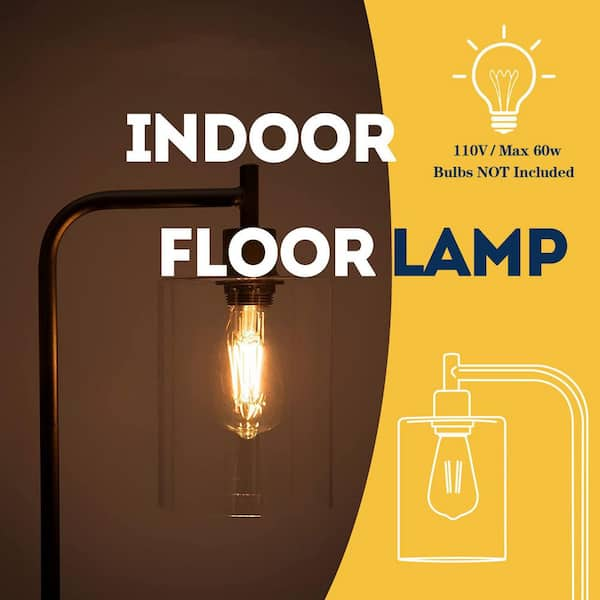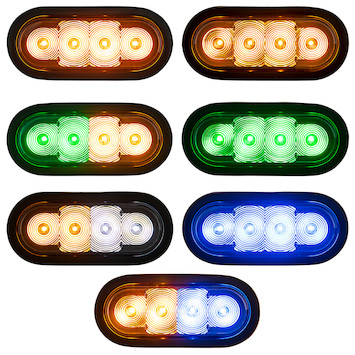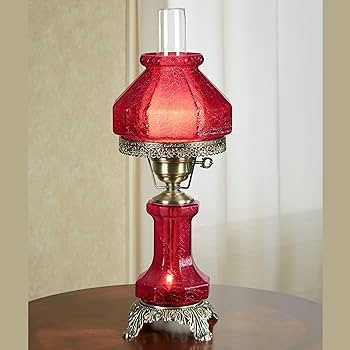Table of Contents
Lighthouses have long been symbols of safety and guidance for sailors navigating treacherous waters. Over the centuries, these iconic structures have evolved significantly in terms of technology, from the humble flicker of an oil lamp to the precision and efficiency of modern LED beacons. In this article, we trace the remarkable technological evolution of lighthouses, highlighting the innovations that have illuminated the way for mariners throughout history.
Lighthouses stand as enduring symbols of safety and guidance, their unwavering beacons offering solace to sailors navigating perilous waters. Throughout the annals of time, these iconic structures have witnessed a profound transformation in terms of technology, a testament to human ingenuity and our relentless pursuit of precision and efficiency.
The humble flicker of an oil lamp, the earliest light source employed by lighthouses, marked the inception of this noble tradition. In those early days, keepers painstakingly tended to these lamps, ensuring they emitted a constant, reassuring glow that could be seen for miles across the horizon. These early lighthouses were monuments to dedication and vigilance, their steady flames guiding countless ships to safety.
As the centuries passed, lighthouse technology evolved in tandem with broader advancements in engineering and materials. The development of sophisticated lens systems allowed for the creation of powerful, focused beams of light, dramatically increasing the range and effectiveness of these beacons. The introduction of mechanisms that rotated these lenses produced the distinctive flashing patterns that sailors relied upon for navigation.
Perhaps one of the most significant milestones in lighthouse technology was the shift from oil lamps to electricity. This innovation brought about a new era of efficiency, reliability, and precision. Electric lamps, powered by generators or batteries, eliminated the need for manual refueling and constant oversight, reducing the workload of lighthouse keepers.
In recent decades, the advent of modern LED beacons has marked yet another leap forward in lighthouse technology. These energy-efficient, incredibly bright lights have revolutionized the field, providing mariners with highly visible signals while significantly reducing maintenance costs and environmental impact.
Today, lighthouses are equipped with cutting-edge technology, including automated monitoring systems, GPS synchronization, and remote maintenance capabilities. These innovations ensure that lighthouses continue to fulfill their crucial role in maritime safety, even in the face of a changing world.
In tracing this remarkable technological evolution, we pay homage to the keepers and engineers who have dedicated themselves to illuminating the way for mariners throughout history. From the flickering oil lamps of old to the precision and efficiency of modern LED beacons, lighthouses remain beacons of hope and safety, standing as beacons of human progress and unwavering dedication to maritime navigation.
To expand your knowledge on this subject, make sure to read on at this location: Sabik – Global manufacturer of marine signals
The Era of Oil Lamps
The earliest lighthouses, dating back to ancient times, relied on open flames fueled by oil to produce light. These early beacons were simple yet effective, providing a steady source of light visible to ships at sea. The development of sophisticated lens systems enhanced the intensity and reach of the light, making navigation safer along coastlines.
One of the most famous lighthouses of this era is the Pharos of Alexandria, which stood as one of the Seven Wonders of the Ancient World. Its towering structure housed a massive open flame that served as a guiding light for mariners in the Mediterranean.
nullYou can also read more about this here: The Evolution of Electrical Infrastructure in World Heritage Sites

In the early 19th century, a groundbreaking innovation revolutionized lighthouse technology
the Fresnel lens. Invented by French engineer Augustin-Jean Fresnel, this lens system dramatically improved the efficiency of lighthouses. It captured and concentrated light into a focused beam, increasing visibility while reducing the need for massive fuel consumption.
Fresnel lenses allowed lighthouses to cast their light much farther and with greater precision. They became a standard feature in lighthouses around the world, significantly enhancing maritime safety.
The invention of the Fresnel lens by the visionary French engineer Augustin-Jean Fresnel stands as a watershed moment in the history of lighthouse technology. This ingenious lens system revolutionized the very essence of lighthouses, transforming them from modest beacons into powerful navigational aids that would forever alter the course of maritime history.
Prior to the advent of the Fresnel lens, lighthouses faced significant limitations. Their light sources, often consisting of open flames fueled by oil or other combustibles, were relatively feeble and inefficient. To compensate for their limited reach, lighthouses had to be constructed at closer intervals along treacherous coastlines, a costly and logistically challenging endeavor.
The Fresnel lens changed everything. Its design allowed it to capture and concentrate light into a focused, intense beam that could pierce through the darkest of nights and the thickest of fog. This concentrated beam dramatically extended the reach of lighthouse illumination, enabling ships to spot the guiding light from much greater distances. This increase in visibility was a game-changer for maritime safety, as it provided mariners with a more reliable means of navigation.
Perhaps equally significant was the reduction in fuel consumption. The Fresnel lens made it possible to achieve a much brighter light using significantly less fuel. This not only reduced operational costs but also had a positive environmental impact, as it lowered the ecological footprint of lighthouses. As the world began to prioritize sustainability, Fresnel lenses aligned perfectly with the evolving ethos of responsible resource usage.
Soon after its invention, Fresnel lenses became the standard feature in lighthouses across the globe. They were embraced by maritime nations far and wide, contributing to a significant increase in maritime safety and navigation efficiency. The precision and reach of these lenses guided countless ships away from treacherous coastlines and perilous waters, preventing countless disasters and saving innumerable lives.
In sum, the Fresnel lens stands as a testament to human ingenuity and innovation. It not only extended the reach of lighthouses but also transformed them into beacons of hope, guiding vessels through the darkest of nights and the most challenging of weather conditions. The legacy of Augustin-Jean Fresnel’s invention endures in the continued operation of lighthouses and serves as a reminder of the profound impact that advancements in technology can have on the safety and well-being of seafarers worldwide.
To delve further into this matter, we encourage you to check out the additional resources provided here: Great Lakes Navigation and Navigational Aids

The Transition to Electricity
The late 19th and early 20th centuries witnessed another significant advancement in lighthouse technology—the transition from oil lamps to electricity. Electric lamps were more reliable, cost-effective, and required less maintenance than their oil-based predecessors.
One iconic example of this transition is the Statue of Liberty, which was outfitted with a powerful electric light in 1916, transforming the monument into a makeshift lighthouse for a brief period during World War I.
The late 19th and early 20th centuries marked a pivotal era in lighthouse technology, characterized by a transformative shift from traditional oil lamps to the marvel of electricity. This transition not only revolutionized the way lighthouses operated but also had far-reaching implications for maritime safety, efficiency, and the overall role of these coastal sentinels.
Reliability and Efficiency: Electric lamps brought unprecedented reliability to lighthouses. Unlike their oil-based counterparts, they didn’t require constant attention to maintain a steady, bright light. Lighthouse keepers could now focus on other critical aspects of their duties, knowing that the light would shine consistently, regardless of changing weather conditions.
Cost-Effective Illumination: The adoption of electric lamps proved to be more cost-effective in the long run. While the initial installation costs were significant, electric lamps reduced the ongoing expenses associated with oil procurement, lamp maintenance, and the employment of keepers. This cost efficiency allowed for the expansion and improvement of maritime lighting systems, benefiting both commercial and naval interests.
Enhanced Visibility: Electric lamps offered superior illumination capabilities. They could produce brighter, more penetrating beams of light, significantly increasing the range at which ships could detect the lighthouse. This improvement in visibility was crucial for ensuring the safety of vessels navigating treacherous waters, especially during inclement weather or periods of limited visibility.
Transforming Monuments into Lighthouses: The transition to electric lighting had unexpected consequences, such as the iconic transformation of the Statue of Liberty into a makeshift lighthouse. During World War I, the Statue was equipped with a powerful electric light in 1916, temporarily serving as a navigational beacon for ships entering the busy harbor. This adaptation of a symbol of freedom into a functional aid for maritime navigation underscored the adaptability and innovation inherent in lighthouse technology.
Pioneering Innovations: Alongside the adoption of electricity, lighthouse engineers and designers began experimenting with innovative optical systems, such as Fresnel lenses and rotating optics, to further enhance the efficiency of lighthouse signals. These innovations not only amplified the reach of the light but also facilitated the identification of individual lighthouses based on their distinctive light patterns.
In conclusion, the transition from oil lamps to electricity in lighthouses during the late 19th and early 20th centuries represented a pivotal moment in maritime history. This technological leap brought about greater reliability, cost-effectiveness, and visibility in maritime navigation. It also showcased the adaptability of lighthouses, as demonstrated by the Statue of Liberty’s temporary role as a navigational beacon during a critical period in history. These innovations in lighting technology continue to contribute to the safety and efficiency of maritime transport today.
If you’d like to dive deeper into this subject, there’s more to discover on this page: The Evolution of Electrical Infrastructure in World Heritage Sites

The Advent of Modern LED Beacons
In recent decades, lighthouse technology has undergone a revolution with the widespread adoption of Light Emitting Diode (LED) technology. LED beacons offer numerous advantages over traditional lighting systems:
In recent decades, the world of lighthouse technology has witnessed a remarkable revolution, primarily driven by the widespread adoption of Light Emitting Diode (LED) technology. This shift has ushered in a new era of efficiency, reliability, and sustainability in maritime navigation. LED beacons have proven to be a game-changer, offering a host of advantages that have transformed the way we illuminate our coastlines and protect seafarers:
Energy Efficiency: LED lights are incredibly energy-efficient compared to traditional incandescent or halogen bulbs. They consume significantly less electricity while providing equally, if not better, illumination. This energy efficiency reduces operational costs and lessens the environmental impact of lighthouses, aligning with modern sustainability goals.
Longevity: LEDs have a significantly longer operational life compared to conventional bulbs. They can last for tens of thousands of hours before needing replacement, reducing the frequency of maintenance and ensuring that beacons remain operational for extended periods.
Instant Illumination: LEDs light up instantly without the warm-up time required by some traditional lighting systems. This instantaneous response is critical for ensuring that lighthouses provide timely and reliable guidance to vessels in all weather conditions.
Customization: LED technology allows for greater flexibility in light output and patterns. Lighthouse operators can easily adjust the intensity and characteristics of the light to meet specific navigation requirements, adapting to changing sea conditions and navigational needs.
Remote Monitoring: Modern LED beacon systems often incorporate remote monitoring and control capabilities. This enables lighthouse authorities to assess the status of the beacon, detect faults, and perform maintenance tasks remotely, improving operational efficiency and minimizing downtime.
Reduced Light Pollution: LEDs can be designed to emit light more precisely, reducing light spillage and minimizing light pollution in surrounding areas. This benefit is particularly important in coastal regions where wildlife and human communities may be affected by excessive light.
Environmental Benefits: LED technology is environmentally friendly, as it contains no hazardous materials like mercury, which is commonly found in older lighting technologies. LED lighting is in line with efforts to reduce the environmental impact of maritime infrastructure.
Cost Savings: While the initial investment in LED technology may be higher than traditional lighting systems, the long-term cost savings, including reduced energy consumption and maintenance, make LEDs a financially wise choice for lighthouse operators.
In essence, the transition to LED technology represents a significant advancement in the evolution of lighthouse illumination. It not only enhances the safety and reliability of these vital maritime structures but also contributes to a more sustainable and environmentally conscious approach to coastal navigation. As LED technology continues to evolve, we can anticipate even more innovations that will further enhance the efficiency and effectiveness of lighthouses in the service of mariners around the world.
To delve further into this matter, we encourage you to check out the additional resources provided here: Illuminating The Past: A Journey Through The History Of Flashlights |

Energy Efficiency
LEDs consume significantly less energy than conventional lamps, reducing operating costs and environmental impact.
nullIf you’d like to dive deeper into this subject, there’s more to discover on this page: Renewable energy for sustainable development in India: current …

Durability
LEDs have a longer lifespan and require less maintenance, resulting in reduced downtime and increased reliability.
LEDs, or Light Emitting Diodes, represent a significant leap forward in lighting technology that goes far beyond their energy efficiency. One of their standout advantages is their exceptional longevity, which has transformative implications for various industries and applications.
Compared to traditional lighting sources like incandescent or fluorescent bulbs, LEDs boast an impressively extended lifespan. While incandescent bulbs typically last around 1,000 hours and fluorescent tubes approximately 10,000 hours, LEDs can continue to shine brightly for up to 25,000 hours or more. This remarkable longevity means that once installed, LED lighting systems can operate for years without requiring replacements.
This extended lifespan translates directly into tangible benefits, especially in commercial and industrial settings. Reduced downtime is one of the most significant advantages. In facilities where lighting is mission-critical, such as factories, hospitals, or data centers, having to replace bulbs or fixtures can disrupt operations, lead to productivity losses, and incur maintenance costs. With LEDs, the frequency of replacements is drastically reduced, minimizing disruptions and ensuring that critical tasks can continue without interruption.
The lower maintenance requirements of LEDs also translate into cost savings. Traditional lighting systems often necessitate periodic maintenance, including the replacement of bulbs, ballasts, or starters. These ongoing expenses can quickly add up, especially in large-scale installations. LEDs dramatically cut down maintenance costs because they don’t require frequent replacements, and their reliability means fewer unexpected failures.
Furthermore, the reliability of LEDs enhances safety and security in various environments. For instance, in outdoor lighting applications like streetlights or security lighting, LEDs provide consistent illumination throughout their extended lifespan. This ensures that public spaces remain well-lit, reducing safety concerns and potential security risks associated with dark areas.
In the world of aviation, LEDs have revolutionized runway lighting. The reliability of LED runway lights is crucial for the safety of air travel, where any malfunction can have catastrophic consequences. LEDs offer exceptional visibility, precision control, and longevity, making them the preferred choice for airport lighting systems.
In conclusion, the extended lifespan and reduced maintenance requirements of LEDs go hand in hand, transforming the lighting landscape across industries. Whether in commercial, industrial, or public settings, the reliability and durability of LEDs not only contribute to significant cost savings but also enhance safety, security, and operational efficiency. As technology continues to advance, the adoption of LEDs represents a bright future for the lighting industry, where longevity and reliability are paramount.
Explore this link for a more extensive examination of the topic: Push Buttons & Signaling Devices | Allen-Bradley

Customization
LED lights can produce various colors and light patterns, allowing for more distinct and recognizable signals.
The versatility of LED lights in producing various colors and light patterns has revolutionized the way lighthouses communicate with mariners and provide essential information. This adaptability not only enhances their visibility but also enables lighthouses to convey specific messages and warnings effectively.
Color Coding for Clarity
LED lights can emit different colors with precision and consistency, allowing lighthouses to employ color coding for navigational purposes. Mariners can interpret these colors to determine their position, proximity to hazards, or the safe passage route. For example:
- Green Lights: Typically used to mark safe passages, harbor entrances, or starboard (right-hand) sides of channels when entering from the sea.
- Red Lights: Indicate the port (left-hand) side of channels when entering from the sea or warn of areas with potential hazards.
- White Lights: Signal a safe course or identify lighthouses themselves.
These color-coded signals enable mariners to make crucial decisions based on the information provided by the lighthouse, enhancing navigation safety.
Distinctive Light Patterns
LED technology allows lighthouses to create unique light patterns, which can be invaluable for mariners trying to differentiate one lighthouse from another or determine their precise location. Distinctive light patterns are especially useful in areas with multiple lighthouses or when navigating intricate coastal waters.
Some commonly used light patterns include:
- Flashing Lights: Periodic flashes of light with specific intervals and durations.
- Occulting Lights: The opposite of flashing lights, where the light is mostly on but briefly interrupted.
- Isophase Lights: Equal periods of light and darkness, aiding in distinguishing between lighthouses with similar characteristics.
These distinctive patterns, combined with LED’s ability to switch rapidly and precisely, ensure that mariners can identify specific lighthouses and interpret their signals accurately.
Enhancing Safety and Navigation
The capability to produce various colors and light patterns not only improves visibility but also supports modern navigation systems and technologies. For instance, automatic identification systems (AIS) on ships can receive and interpret lighthouse signals, further enhancing navigation safety.
Moreover, the adaptability of LED lights allows lighthouses to participate in initiatives like “dark skies” conservation, where they can reduce light pollution during specific times or conditions, such as low maritime traffic or clear nights. This not only preserves the natural night sky but also conserves energy and reduces operational costs.
In conclusion, the ability of LED lights to generate various colors and light patterns has brought about a new era in lighthouse technology. This adaptability serves as a critical tool for enhancing maritime safety, aiding navigation, and providing mariners with clear and distinct signals. As lighthouses continue to evolve, their ability to communicate effectively with seafarers remains a crucial element in the ongoing quest for safer and more efficient maritime navigation.
Don’t stop here; you can continue your exploration by following this link for more details: Abacus Large LED Glass Module – Hubbardton Forge

Instant Illumination
LEDs reach full brightness instantly, unlike some older lamps that required time to warm up.
The advent of Light Emitting Diodes (LEDs) has revolutionized the way we illuminate our world. One of their most remarkable attributes is their ability to achieve full brightness in an instant, a feature that sets them apart from older, traditional lighting technologies that required a warm-up period.
In the past, lighting systems like incandescent bulbs and fluorescent tubes needed a few moments to reach their maximum illumination. This delay was not only an inconvenience but also impacted the practicality of certain applications. For instance, in environments where quick and reliable lighting was crucial, such as emergency situations, hospitals, or security systems, this warm-up time posed a significant drawback.
LEDs, on the other hand, defy this limitation. The moment you flip the switch or activate them, they shine forth with their full brightness, providing immediate and consistent illumination. This instant illumination has profound implications across various sectors.
In residential settings, the ability of LEDs to provide instant brightness enhances comfort and convenience. When you enter a room, there’s no need to wait for the light to reach its optimal output; it’s there at the flick of a switch, ready to create a welcoming and well-lit environment.
In commercial and industrial applications, instant illumination is particularly advantageous. Warehouses, factories, and large facilities require dependable lighting for safety and efficiency. With LEDs, there are no delays in achieving the desired brightness levels, ensuring that workers can perform their tasks effectively from the moment they step into the workspace.
Moreover, instant brightness in outdoor and street lighting enhances safety during nighttime hours. Streets and public spaces are well-lit from the outset, minimizing the risk of accidents and improving overall security.
This feature also extends to the realm of smart lighting and automation. With LEDs responding instantly to commands, they are highly compatible with automated systems and motion sensors, providing rapid adjustments based on changing conditions or occupancy.
In summary, the instantaneous brightness of LEDs represents a significant leap forward in lighting technology. It not only enhances our daily lives with added convenience and safety but also makes LEDs ideal for a wide range of applications where immediate and reliable illumination is paramount. As we continue to embrace LED technology, this characteristic remains a shining example of its efficiency and adaptability in our modern world.
You can also read more about this here: The 4 Best Light Therapy Lamps of 2023 | Reviews by Wirecutter

Reduced Light Pollution
LEDs can be precisely focused, minimizing light pollution and preserving the night sky’s integrity.
These advancements have allowed lighthouses to continue their vital role in maritime navigation with improved efficiency and precision.
nullTo delve further into this matter, we encourage you to check out the additional resources provided here: Kerosene lantern – Energy Education

Preservation of Heritage
Despite the transition to modern technology, many historic lighthouses have been preserved as cultural landmarks, complete with operational, historic lens systems or replicas to maintain their authenticity. These lighthouses serve as living museums, showcasing the technological evolution and rich maritime history that continues to captivate the imagination.
The enduring allure of historic lighthouses extends beyond their picturesque appearances and their significance as navigational aids. Even in the face of modern technological advancements, many of these venerable structures have been lovingly preserved as cultural landmarks, embodying a tangible link to our maritime heritage. These preserved lighthouses stand as living testaments to the dedication of countless keepers and the intrinsic value of our shared history.
Operational Authenticity: One remarkable aspect of the preservation effort is the commitment to maintaining operational authenticity. Several historic lighthouses continue to shine their beams as they did in bygone eras, using carefully preserved historic lens systems. These intricate, precision-crafted lenses are marvels of engineering, and their ongoing use allows visitors to experience the captivating play of light that has guided sailors for generations.
Historical Replicas: In cases where original lens systems are no longer operational, meticulous replicas are crafted to maintain historical accuracy. These replicas ensure that the lighthouses’ visual identity remains true to its heritage, allowing visitors to appreciate the aesthetic and functional aspects of these structures as they appeared in their heyday.
Educational Centers: Preserved lighthouses often function as educational centers, offering immersive experiences that transport visitors to different epochs of maritime history. Visitors can explore the living quarters of lighthouse keepers, gain insights into the challenges and solitude they faced, and marvel at the intricacies of the lighthouse technology that once held life-saving significance.
Maritime Museums: Many preserved lighthouses also house maritime museums that showcase artifacts, photographs, and stories of maritime life. These museums provide a comprehensive look at the rich tapestry of maritime history, from the daily routines of lighthouse keepers to the stories of ships that navigated treacherous waters.
Cultural Preservation: Preserved lighthouses contribute to the preservation of cultural identity. They represent the dedication of generations who safeguarded the coasts, often at great personal sacrifice. These landmarks resonate with the collective memory of coastal communities, offering a sense of continuity and pride in their maritime heritage.
Tourist Attractions: Preserved lighthouses are magnets for tourists and history enthusiasts. They attract visitors from near and far, providing opportunities to appreciate the craftsmanship of their construction, the resilience of their keepers, and the stunning coastal vistas they command. These landmarks are not merely static structures; they come alive with the echoes of history.
Community Engagement: Lighthouse preservation frequently involves the local community, fostering a sense of ownership and pride. Communities often organize events, festivals, and fundraisers to support the maintenance and operation of these cultural treasures. These efforts strengthen community bonds and promote awareness of maritime history.
Artistic Inspiration: Preserved lighthouses continue to inspire artists, writers, and photographers. Their timeless beauty, dramatic coastal settings, and historical significance provide a wealth of creative inspiration. Artists interpret lighthouses in various mediums, infusing them with new life in contemporary expressions of art and culture.
In essence, preserved lighthouses are more than just architectural relics; they are living embodiments of our maritime legacy. Their ongoing operation, dedication to historical accuracy, and role as educational and cultural centers breathe life into the history they represent. As visitors step into these hallowed structures, they embark on a journey through time, gaining a deeper appreciation for the keepers who stood watch, the technology that guided ships, and the indomitable spirit of maritime exploration and safety.
Don’t stop here; you can continue your exploration by following this link for more details: Lightships Theme Study | Maritime Heritage Program

The journey from oil lamps to modern LED beacons in lighthouse technology represents a remarkable progression. These iconic structures, once reliant on simple open flames, now employ cutting-edge technology to guide ships safely through intricate waterways. The continuous evolution of lighthouse technology demonstrates the enduring commitment to maritime safety and the fusion of tradition with innovation in the ever-changing world of navigation.
The evolution of lighthouse technology, from the humble flicker of oil lamps to the brilliance of modern LED beacons, is nothing short of awe-inspiring. It represents a remarkable journey through time, reflecting the relentless pursuit of improvement in maritime safety and the harmonious blend of tradition with innovation.
In the early days of lighthouse history, the guiding light was a simple open flame fueled by oil. These flickering flames were beacons of hope for sailors navigating perilous waters, yet they had their limitations. They were vulnerable to the elements, their brightness varied, and they required vigilant maintenance by dedicated keepers who risked their lives to ensure the light never wavered.
Fast forward to the present day, and we find lighthouses equipped with cutting-edge LED technology. These modern beacons cast brilliant, unerring light across intricate waterways, guiding ships with unwavering precision. LED technology has revolutionized lighthouse illumination, offering enhanced brightness, durability, and energy efficiency. It’s a testament to human ingenuity and our commitment to harnessing the latest advancements for the safety of mariners.
The continuous evolution of lighthouse technology underscores the unwavering dedication to maritime safety. It’s a commitment that spans generations, where each era builds upon the knowledge and innovations of the past. Lighthouse keepers of old would marvel at the sophistication of today’s technology, yet they would also recognize the same spirit of duty and service that drove their own efforts.
This fusion of tradition with innovation is a hallmark of the ever-changing world of navigation. While technology has transformed the way we guide ships and ensure maritime safety, the symbolic importance of lighthouses remains unchanged. They are more than just beacons; they are symbols of hope, guardians of the coastline, and emblems of human dedication to the seafaring community.
As we look back on the journey from oil lamps to LED beacons, we see not just a story of technological progress but a narrative of human resilience, adaptability, and unwavering commitment to the safety of those who traverse the world’s oceans. It’s a testament to the enduring importance of lighthouses in an ever-evolving maritime landscape, where the guiding light remains a beacon of safety and a tribute to our shared maritime heritage.
Explore this link for a more extensive examination of the topic: Ultraviolet radiation emitted by lamps, TVs, tablets and computers …
More links
For a comprehensive look at this subject, we invite you to read more on this dedicated page: Lighthouse Lamps Through Time by Thomas Tag | US Lighthouse …
